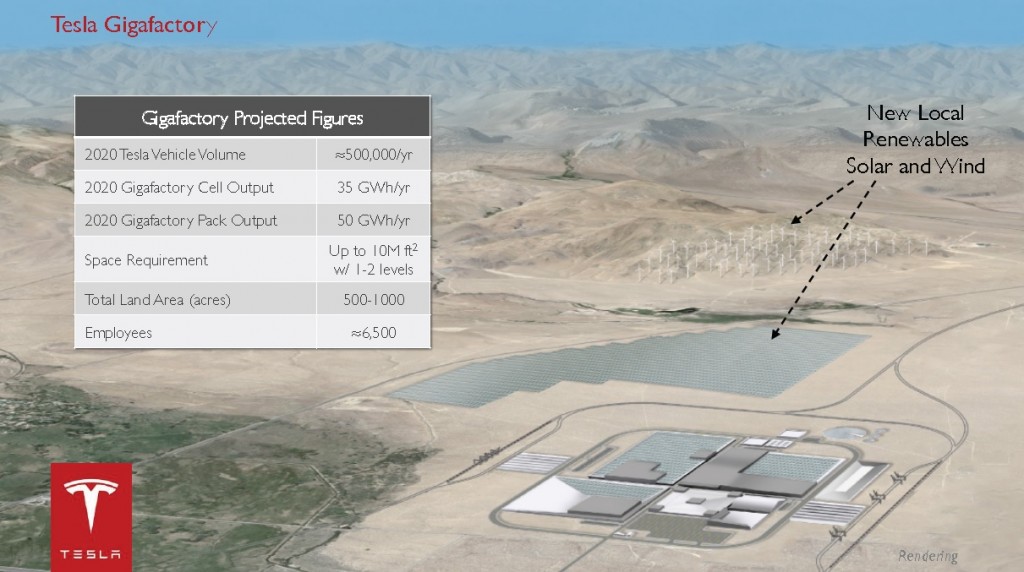There is no such thing as a truly green car.
All cars require raw materials and energy to produce, use energy during their time as transport, and require energy to recycle--the components that can be recycled, at least.
To mitigate such pollution issues and increase supply chain transparency, Tesla Motors [NSDQ:TSLA] has announced it will source raw battery materials from North America only, when it opens its $5 billion battery gigafactory.
Batteries are the subject of much environmental debate, requiring large quantities of assorted metals and minerals in their manufacture.
These are often mined, produced and transported at great expense and energy--leaving behind a large and dubious pollution footprint as they do so.
The plight of China has brought such issues to attention recently, where government regulations have closed several graphite-producing plants amid pollution concerns.
MORE: Electric-Car Batteries, Graphite, And Pollution In China
Used in battery anodes, graphite creates polluting dust during its mining, and requires corrosive chemicals like hydrochloric acid to process into a usable form. These, and other forms of pollution, are causing great damage to the surrounding areas.
Unfortunately, graphite and other materials are used in significant quantities in electric car batteries--particularly batteries as big as those fitted to Tesla's vehicles.
According to Bloomberg, Tesla says its local sourcing will be "focused on minimizing environmental impact while significantly reducing battery cost".
Cost will be a defining factor, as U.S.-sourced graphite may not be as inexpensive as that sourced elsewhere--even if it's greener, and as one analyst puts it, "more patriotic".

Slide showing Tesla Motors gigafactory statistics, from Feb 2014 presentation
Doing so with Tesla's gigafactory, expected to double worldwide output of lithium-ion batteries when it opens, could leave a vast pollution footprint behind it--the result of lithium, cobalt, graphite and other materials converging from global locations.
So where could Tesla get the materials it seeks?
There are several current possibilities. Tesla currently gets cobalt from the Philippines, but Formation Metals Inc. in Idaho provides them with one option--the firm is currently seeking capital to fund a new facility there.
ALSO READ: Tesla's Lithium-Ion Battery Gigafactory: What You Need To Know
For lithium, Tesla could look to Rockwood in Nevada and North Carolina. Toronto-based Avalon Rare Metals Inc. is also an option.
Another firm, RB Energy, is soon to start work on a large plant in Quebec. While 75 percent of its output (itself 12 percent of the world's total) is heading to two large customers in Asia, Tesla could pick up a significant proportion of the remainder.
Graphite could be more difficult--another five or six graphite mines are needed to meet the demand that Tesla's factory would cause, though U.S. regulation means production would be far cleaner than that of China--and that's before you get to the benefits of reducing transportation distances.
Producing batteries for half a million cars a year--as Tesla intends to do at its plant--will never be a truly green process.
But sourcing locally could be the difference between the firm making a real difference, or indirectly doing real environmental harm.
Now, it just needs to ensure it can keep on top of the costs of locally-sourced battery materials.
_________________________________________













